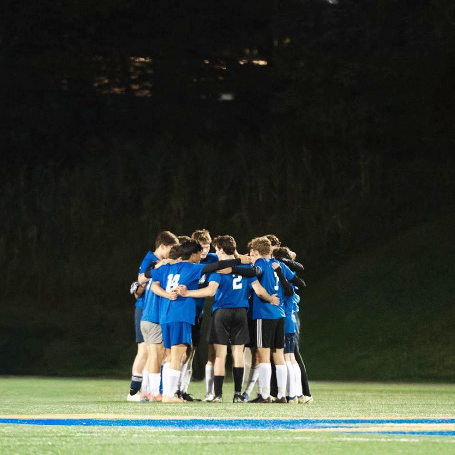
On Sept. 23, Oprah Winfrey announced that
The Water Dancer
by Ta-Nehisi Coates was her first pick for the newly relaunched Oprah’s Book Club. In partnership with Apple, Winfrey rebuilt her book club through Instagram platform @oprahsbookclub to find a new, modern way to reconnect with readers.
This new version of the book club requires fans to buy the book and follow the Instagram account; the account guides readers on how to participate. Staffers from Winfrey’s television network, OWN, and her magazine,
The Oprah Magazine
, posted on @oprahsbookclub throughout the month, including a weekly suggested reading schedule. Each Monday from Sept. 29 to Oct. 27, Winfrey posted videos on the Instagram account to share her thoughts on the reading. She ended the videos by posing discussion questions for readers to respond to in the comments section. After readers contributed with their thoughts, they were encouraged to respond to other readers’ comments to facilitate discussion. Even Oprah herself would occasionally chime in. After readers finished their final reading on Oct. 27, Apple TV+ broadcasted Winfrey’s hour-long interview with Coates on Nov. 1.
Ta-Nehisi Coates is a professor, journalist, advocate, and now, novelist. His work focuses on African American history, and many cultural and political issues surrounding race in our nation today. Some of Coates’s notable works include his non-fiction best seller
Between the World and Me
(which earned a National Book Award), author of the
Black Panther Comic Books
, his essay “The Case for Reparations,” and a speech he gave at a congressional hearing on reparations earlier this year.
The Water Dancer
follows biracial enslaved man Hiram Walker through his journey to find freedom. His father is a white plantation owner, who enslaved his mother. Hiram lives on his father’s plantation called Lockless in Virginia during the middle of the nineteenth century. Hiram has a special gift for memory — he can recall any minute detail in recent years, yet he struggles to recount memories of his mother Rose, as Hiram’s father sold her off of the plantation when Hiram was a child.
The Water Dancer
is a love story as much as it is a story of the underground railroad, with Hiram’s attempt to find freedom filled with betrayal, heartbreak, and loss. His attachment to his partner Sophia and his maternal figure, Thena, drive Hiram throughout the novel. Eventually, a woman with the nickname of Moses (who readers later learn is Harriet Tubman) aides Hiram, and she tells him what Winfrey claims captures the essence of the novel: “To forget is to truly slave. To forget is to die… for memory is the chariot, for memory is the the way, and memory is a bridge from the curse of slavery to to the boon of freedom.”
Coates spent the last ten years conducting research for and writing
The Water Dancer
. He visited three slavery plantations, including Thomas Jefferson’s estate Monticello. To give readers the most accurate depiction of the enslaved, upon each trip Coates took he wrote personal dispatches to describe what he felt during the experiences.
Some of the strengths of
The Water Dancer
are Coates’s language and plot choices. For example, Coates did not refer to enslaved men and women as slaves because slavery is “not who they are, it’s what is done to them.” Winfrey also noted that Coates “brought to life the humanity of the enslaved” through his use of the terms “the Quality” and “the Tasked,” which he coined to describe masters and the enslaved, respectively. Contrary to the often heavily used terms “masters” and “slaves,” Coates eliminates the hierarchy as they were all people living in a time where some had unfair control over others, based solely on the color of their skin. Hiram’s struggle with pain and the power of memory is eventually what allows him to achieve his freedom. Coates structured the plot this way to demonstrate how “in today’s politics, things are rooted in forgetting and I think there is great power in remembering.” Coates also argued that it is problematic that so many people today have an “à la carte” relationship with history because they only highlight the most positive parts of the past.
Winfrey chose the book because of the extreme spiritual impact that it had on her. She admitted “Early on I knew the book was going to cut me up. I ended up with my soul pierced.” In her opinion, Winfrey believed that
The Water Dancer
was successful because it was “a way ‘in’ for people to see things in a way they had not seen before.” Coates was able to emotionally immerse readers in Hiram’s journey for a whole new intimate view of slavery, and even race problems we see in America today. With our extremely high rates of mass incarceration and continued microaggressions towards African Americans, Winfrey points out that in
The Water Dancer
, “Every sentence is about then but it’s also about now.”
Winfrey will announce her next pick for her book club on Thursday, Nov. 7.
























